What Is Secondary Amenorrhea?
Secondary amenorrhea is the absence of menstrual periods for 6 months in a woman who had previously been regular, or for 12 months in a woman who had irregular periods.
How Common Is Secondary Amenorrhea?
This problem is seen in about 1% of women of reproductive age.
Secondary Amenorrhea is a Symptom
Secondary amenorrhea is a symptom that can be caused by many pathological states. The diagnostic evaluation should lead to the correct diagnosis if the problem is approached in a logical stepwise manner.
Step 1 - Patient History
A detailed menstrual history should be taken.
Step 2 – Physical Examination
Signs of androgen excess such as hirsutism (excess hair growth) and clitoromegaly (enlargement of the clitoris).
The breast exam may reveal galactorrhea (milky discharge from the breasts).
Estrogen deficiency may be suggested on pelvic exam by a smooth vagina that lacks the normal rugae (wrinkles) and a dry endocervix with no mucous.
Step 3 - Suggest Certain Etiologies from History and Exam
Example Case Study:
For example, a 32 year old woman who has previously had regular periods now comes to the doctor after 8 months of not having any period following a D&C for heavy bleeding after a miscarriage. She most likely has intrauterine adhesions causing her lack of periods.
A reasonable approach to this patient would be:
- HCG blood test to rule out pregnancy
- FSH level to demonstrate the presence or absence of menopause
- Hysteroscopy to check the uterine cavity if the first 2 tests are normal
Step 4 – Perform Diagnostic Evaluations
Some patients will not demonstrate any obvious etiology for their amenorrhea on history and physical exam. These patients can be worked up in a logical manner using a stepwise approach.
Diagnostic approaches may vary, however, differences pertain mainly to the order in which tests are performed.
There are several ways that a workup for secondary amenorrhea can be approached. One reasonable diagnostic approach is described here. If your doctor did things differently, that doesn’t mean that he or she was wrong or that this approach is wrong. Every case should be treated individually.
Diagnostic Evaluation A - Thyroid Function
- Both hypothyroidism and hyperprolactinemia can cause primary or secondary amenorrhea.
- They are easily tested for through blood work.
- If present, medication therapy should result in return of regular periods.
Diagnostic Evaluation B – Progestational Challenge (Progesterone Withdrawal Test)
The progestational challenge test is performed by giving a progestin (medication).
- If the patient experiences withdrawal bleeding after the progestin medication is stopped then she has estrogen present but is not ovulating (anovulation).
- If no withdrawal bleeding occurs, either the patient has very low estrogen levels – or there is a problem with the outflow tract such as uterine synechiae (adhesions) or cervical stenosis (scarring).
Read more about the specifics of the Progestational Challenge (Progesterone Withdrawal Test) – A Diagnostic Test for Secondary Amenorrhea.
Possible Diagnoses for Women with Withdrawal Bleeding
- Anovulation
- Polycystic Ovarian Disease (PCOS)
Chronic anovulation should be managed by periodic progestin withdrawal, or oral contraceptive pills if the patient does not currently desire pregnancy.
If she desires pregnancy, induction of ovulation with clomiphene citrate or injectable gonadotropins can be considered.
If the anovulatory state has been longstanding, endometrial biopsy should be considered to rule out significant hyperplasia or carcinoma of the endometrium.
Possible Diagnoses for Women without Withdrawal Bleeding
- Hypoestrogenism – low estrogen levels
- Compromised outflow tract – either Asherman’s syndrome (adhesions) or cervical stenosis (scarring)
- Premature ovarian failure (POF or POI, or “early menopause”)
If adhesions are found, they should be hysteroscopically lysed if the woman wants pregnancy or regular periods.
Diagnostic Evaluation C - FSH testing
FSH Levels Indicating Ovarian Failure
- If the FSH is greater than 30-40 MIU/ml, the patient probably has ovarian failure.
- Midcycle FSH peak levels in ovulatory cycles should not be this high
- FSH levels that are menopausal should be checked again in a few weeks for confirmation.
- An estradiol level can also be done. With ovarian failure, estrogen is low (less than 20-40 pg/ml).
Ovarian Failure (Premature Menopause)
Once ovarian failure is confirmed, consideration should be given to 3 possibilities:
- Mosaicism involving a Y chromosome
- Fragile X syndrome
- Autoimmune disease
Read more on Premature Ovarian Failure – Causes and Treatments
Hypothalamic Amenorrhea
Hypothalamic dysfunction results in abnormal release of LH and FSH hormones from the pituitary. The end result is a lack of proper follicle development and ovulation.
Possible Causes of Hypothalamic Amenorrhea
- Some medications (e.g. phenothiazines) as well as extremes of weight loss, stress or exercise can cause this type of secondary amenorrhea.
- A pituitary or hypothalamic tumor would be a rare finding in these patients who were all screened with prolactin levels at the beginning of the diagnostic evaluation. However, if there is no cause apparent from the history, it is sometimes suggested to get a baseline CT or MRI scan of the sellar region to rule out a (very rare) tumor.
Hypothalamic Amenorrhea of Uncertain Etiology
Patients with normal prolactin levels and normal imaging studies have hypothalamic amenorrhea of uncertain cause. If amenorrhea and lack of withdrawal bleeding persists, prolactin levels should be measured annually since a small microadenoma could be “hiding”.
Treating Amenorrhea Caused by Anorexia Nervosa
Weight loss as a result of anorexia nervosa is an important diagnosis to make because of the mortality rate of 5-15%. Psychiatric counseling is indicated in most cases.
In this condition, as well as in the other hypothalamic amenorrhea situations, the patients can be significantly hypoestrogenic (a low estrogen situation similar to menopause).
Treatments
If the state is persistent, hormone replacement therapy should be considered for protection against osteoporosis.
One approach is to get an estradiol level and if it is less than 30 pg/ml, counsel the patient that hormonal replacement therapy is indicated.










